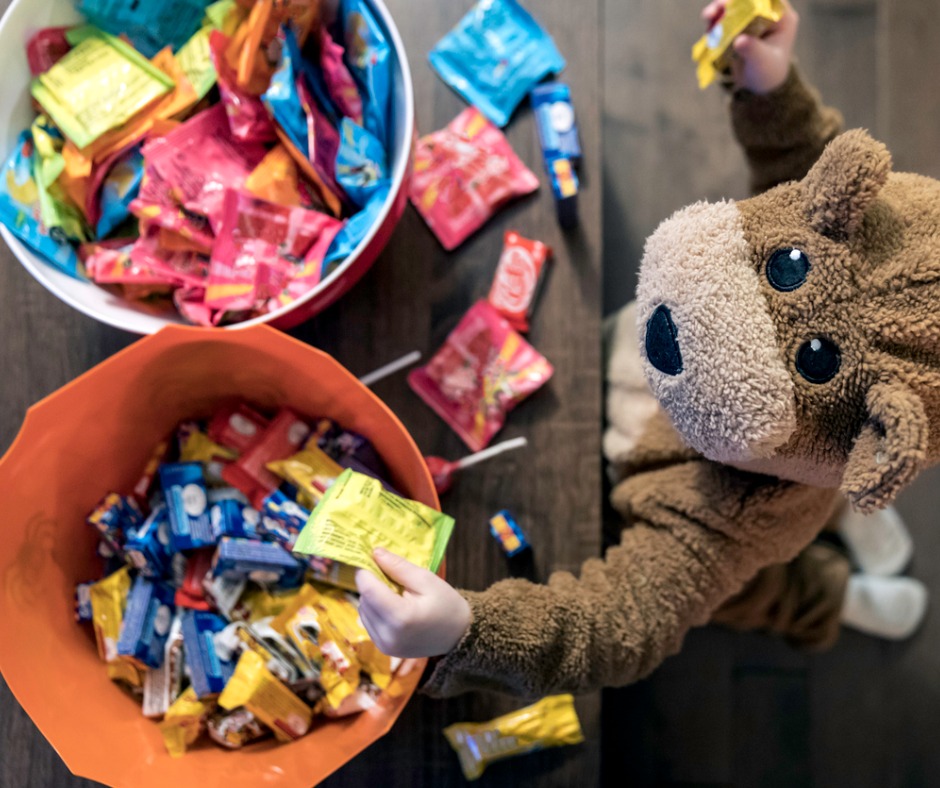
29 Oct What to do With Your Excess Halloween Candy
Kit Kats, Snickers, and Nerds..OH MY!
You’ve spent most of your time as a parent keeping the sugars to a minimum. Now, on just one night, your kids are bombarded with massive amounts of sweets and treats that could induce anyone of any age into a sugar-induced coma. And while you want to still let your kids have fun and enjoy some candy, you know that they are too young to have mastered the self-control necessary for consuming a mountain pile of sweets.
Sugar consumption
It’s no secret that too much sugar is bad for your health. Not only can it lead to obesity, diabetes, and cardiovascular problems, but some research even shows that it can lead to cancer.
The American Heart Association recommends that children ages 2-18 should limit their sugar intake to less than 25 grams of added sugar a day. However, data from the Centers for Disease Control and Prevention shows that the average American child between the ages of 2-19 consumes 124 grams of sugar (equivalent to 29 teaspoons) every day! (Is it any wonder America has an obesity problem?) In addition, teenage boys were more likely to consume more sugar–up to 161 grams a day.
Then there’s Halloween…where the average trick-or-treating child can consume up to three cups of sugar (or about 7,000 calories of candy). That’s roughly 675 grams of sugar, or essentially the same as chomping down almost 169 standard sugar cubes. Yuck!
Tips to eliminating sugar in your house
If you’re concerned about your children overdoing it on Halloween, try some of these tips:
- Barter with your child.
Yes–you read that right. Have you child trade his/her candy for money, a toy, or a mouthwatering Jolly Llama Sorbet Cream Pop. You can do this by converting a certain amount of pounds to equal a dollar, or even a certain number of pieces to equal a small toy.
- Be picky.
Have your child select 2-3 pieces of candy a day that he can eat whenever he wants. This allows the child to still be in control and enjoy their candy, while not overdoing it. It’s a win-win situation.
- Team up with your dentist.
Many dental offices offer a candy buy-back program. This program will vary depending on the office, but some will pay your child a certain amount of money depending on the weight of the donated candy, while others will exchange the donation for hygiene kits, toothbrushes, and coupons.
- Donate to U.S. Troops:
This is a program that sends your donations of sweets and treats to soldiers. Children can even earn prizes from this, and it is tax deductible.
Similar to Treats for Troops, this program will distribute the goods to deployed troops and first responders that are away from home.
This program distributes your donated candy on Halloween (and other candy-filled holidays) to troops serving away from home.
Operation Trick or Treating for the Troops
Get the whole neighborhood involved with this fun program that allows you to sponsor a community support drive to round up excess candy for troops.
- Donate to local needy families.
You may be surprised to learn how many families aren’t able to go trick-or-treating–whether it be financial problems, or an ill-family member that prevents them from enjoying Halloween like everyone else. You could contact your local food pantry, a homeless shelter, or even a nursing home to see if they will accept your candy donation. In addition, the Ronald McDonald House Charities may also accept candy donations (just be sure to call your local chapter to learn their rules for this).
- Donate to your kids’ school.
Often, teachers will accept unopened donated candy to use as rewards and prizes in their classrooms. Contact your child’s teacher to see.
We hope you have found some good ideas to help reduce the sugar consumption in your house this Halloween. Feeling enlightened? Share your ideas with us! Contact us by clicking here.



No Comments